Help for Students Struggling with Addiction
Find Fast
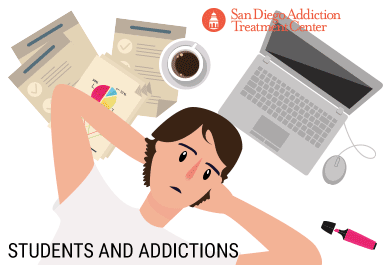
The college experience brings with it many rewards and opportunities, but for many students, college is a place of stress, frustration, loneliness, and peer pressure. For a young adult, living away from home, with the overwhelming temptation to take risks and make bad choices (while still making good grades), the college experience is not always a positive one with a happy ending. Fortunately, there are many resources that offer help for those struggling with addiction, and these can ensure that even students going through a difficult time can still get the best from their college years.
Mental Health and Stress on Campus
Concerns over mental health stress among college students is a serious issue for the healthcare and administrative communities alike, and stress is one of the biggest risk factors for substance abuse among the young adult population. According to Suicide.org, untreated and unreported depression is behind most of the suicides that take place on college campuses, and such deaths are the second leading cause of death on campuses. The first is motor vehicle deaths, says the Journal of College Student Psychotherapy, which also corroborates suicide as the second-most frequent cause of death among college students.
The extent of mental health concerns on campus is such than in 2014, the National Survey of College Counseling Centers wrote than over 50 percent of the students seen by counselors on campus reported feelings of clinical depression or anxiety, findings also supported by Pennsylvania State University’s Center for Collegiate Mental Health. Colleges and universities are also reporting “higher and higher rates of mental illness on campus,” compared to historical trends.
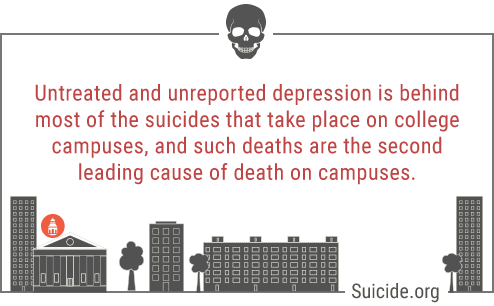
In “Suicide on campus and the pressure of perfection,” The New York Times identifies the constant and unending need for the appearance of social and academic perfection, for people still only in their early 20s, as “potentially life-threatening.” The more elite or established the university, the worse the phenomenon; fees are exorbitantly high, and there is unforgiving pressure from family to excel and go on to a high-expectations career (law, medicine, finance, etc.). At Stanford University, this is called “Duck Syndrome,” because students have to paddle frantically to stay afloat but are expected to glide gracefully through classes and social events. At Pennsylvania State University, the phenomenon is known as the “Penn Face”; stoically showing no signs of vulnerability or fatigue, even as young, popular students, with a world of potential at their fingertips, descend into suicidal thoughts because they cannot cope.
Pushing Students Too Far
 For female students, this pressure is even worse. In 2003, a study out of Duke University’s Women’s Initiative identified the need to be “effortlessly perfect” that many young women are forced to feel on college campuses. They share many challenges with their male counterparts, but they are also expected to be feminine (but not too feminine), sexually active (but not too sexually active), and have a healthy balance of career, academic, and family goals. Female students who struggled to keep up with all these demands (while exhibiting no visible effort in doing so) were found to engage in unhealthy eating habits and even harm themselves. Over 90 percent of female students reported feeling intimidated and overwhelmed by everything that was expected of them, according to the American College Health Association’s 2015 National College Health Assessment.
For female students, this pressure is even worse. In 2003, a study out of Duke University’s Women’s Initiative identified the need to be “effortlessly perfect” that many young women are forced to feel on college campuses. They share many challenges with their male counterparts, but they are also expected to be feminine (but not too feminine), sexually active (but not too sexually active), and have a healthy balance of career, academic, and family goals. Female students who struggled to keep up with all these demands (while exhibiting no visible effort in doing so) were found to engage in unhealthy eating habits and even harm themselves. Over 90 percent of female students reported feeling intimidated and overwhelmed by everything that was expected of them, according to the American College Health Association’s 2015 National College Health Assessment.
College has always been a place of all-night study sessions and high expectations, but the stakes are much higher now than they were a generation ago. It has led to “the dark side of America’s achievement culture,” in the words of the Huffington Post; the rat race for better grades, esteemed social status, and enviable job prospects burns out many young men and women. Those at Ivy League schools feel the pressure even more; students are rarely, if ever, given time off to deal with personal and mental health issues, and those who opt to leave are not always promised readmission. The tough standards contribute to the exclusivity of schools of that caliber, but they come with a very human cost. After a 20-year-old student at Yale took her own life and identified the school’s strict leave-of-absence policies in her suicide note, Yale responded to protests from its students by granting more freedom and flexibility to take time off for health reasons.
Abusing Drugs to Get Ahead
But many students don’t have the resources to take a semester or quarter off from their programs, and some students might not want to draw attention to their struggles. On college campuses, they have a plethora of options to help them cope. Some of those options are positive and healthy; others are far less savory.
The stress of coping with the relentless academic pressure has given rise to a black market of “study drugs,” prescription medication that increases mental concentration and gives users a boost of energy that helps them stay awake and alert without the need for rest or even sleep. Tight deadlines and the looming dread of finals week have led some students to experiment with drugs like Adderall and Ritalin, being able to turn in all-nighters while still having the energy for social activities.
- Increased mental alertness
- Increased concentration
- Decreased fatigue
- Increased initiative
- Insomnia
- Increased self-confidence
- Increased sociability
But the danger lies in Adderall and Ritalin being incredibly powerful drugs that are only meant to be taken for a precise purpose. Misusing these stimulants, either for recreational purposes or out of the belief that they will improve academic performance, has landed many people in hospital emergency rooms. Between 2005 and 1010, there were 10,373 cases of people having to receive emergency treatment for adverse reactions to Adderall and Ritalin, according to the Substance Abuse and Mental Health Services Administration. Reactions range from insomnia (even when the student would otherwise want to sleep) to high blood pressure and an increasing likelihood of stroke. Stimulant abuse can also put a student at risk for developing depression, bipolar disorder, and wild and violent mood swings.

Research has shown that it is mainly young college-aged people who borrow (or steal) the medication from friends or family members, or even from other students. In fact, 74 percent of students obtain the Adderall they abuse from friends who have their own prescriptions, found the Journal of American College Health. A single pill, with enough strength to last for 24 hours, can be sold for $10 during finals week. Some students will fake their way through a simple true-false questionnaire, the results of which “demonstrate” a medical need for prescription stimulants.
Easier to Get than Alcohol
Approximately 20 percent of college students have reported taking study drugs to get through all-nighters, and the Johns Hopkins School of Public Health warns that the numbers are rising. The Journal of Psychoactive Drugs quotes two undergraduate college students to show how deeply the problem runs: One says that “Getting Adderall and Ritalin are probably easier than getting alcohol” on campus, and the other admitted to “[snorting] my friend’s Ritalin before finals.”
 Study drugs are so popularly used like this because the people who take them experience “almost superhuman focus and concentration,” in the words of ABC News, which also quotes the University of Wisconsin’s head of psychiatry for health services as saying that the drugs are not dissimilar to how athletes might take performance-enhancing drugs before a game or performance.
Study drugs are so popularly used like this because the people who take them experience “almost superhuman focus and concentration,” in the words of ABC News, which also quotes the University of Wisconsin’s head of psychiatry for health services as saying that the drugs are not dissimilar to how athletes might take performance-enhancing drugs before a game or performance.
For reasons like this, many students are convinced that there is nothing ethically or medically wrong about taking study drugs to get an edge in a competitive environment. In fact, the students at a “large, urban research university” insisted that Adderall was not a drug, the Substance Use and Misuse Journal reported. In writing about how Adderall became “America’s favorite amphetamine,” the Huffington Post speculated that students may feel that they are doing themselves a disservice if they don’t make use of every resource available to them to get ahead on campus. To that point, almost one in three college students takes prescription drugs, without actually having a prescription for those drugs, at least once during their time at school, per the Center on Young Adult Health and Development.
Students not believing that Adderall is a drug may entice them to continue taking the medication, even beyond finals week and deadlines. In writing about “the other side of Adderall,” Boston University Today points out that the promise of increased alertness and sociability is a very alluring one on a college campus, and the idea of taking an Adderall just to get through the basic parts of day can become a hardwired habit.
Binge Drinking on Campuses
- Alcohol poisoning
- Sexually risky behavior (e.g., unprotected sex, sex with multiple partners, etc.)
- Sexual dysfunction
- Injuries (intentional and/or unintentional)
- High blood pressure
- Stroke
- Neurological damage
In an environment loaded with risk factors, the threats posed by improper use of prescription stimulants can be the tip of the iceberg. The student quoted in the Journal of Psychoactive Drugs may have said that Adderall was easier to obtain than alcohol at his school, but on college campuses across America, getting drunk is not a problem. During Spring Break, for example, male students consume an average of 18 drinks a day, and female students take in 10 drinks a day; one in four students between the age of 18 and 20 will consume alcohol, or take marijuana or MDMA, off campus, with many believing (and told) that experimenting with drugs and alcohol is a rite of passage.
Spring Break is a focal point of excessive drinking, and the focus often manifests in the practice of binge drinking, consuming a large amount of alcoholic drinks very quickly – five or more drinks in two hours for men, four or more drinks in two hours for women. Binge drinking is the greatest danger of the Spring Break ritual, says Forbes, because young men and women are often encouraged (or even shamed) into drinking too much, too quickly.
Call Now (619) 577-4483
The Right to Drink
Alcohol poisoning is the primary cause of death in the 1,825 college students who die every year after binge drinking, but the ubiquitous presence of alcohol on college campuses remains a significant risk factor. In asking the question of why colleges haven’t done more to stop binge drinking, The New York Times writes that consuming alcohol is “so central to students’ expectations of college,” that students have taken to protesting and demonstrating when their respective schools try to implement measures that control the flow of liquor within school grounds.
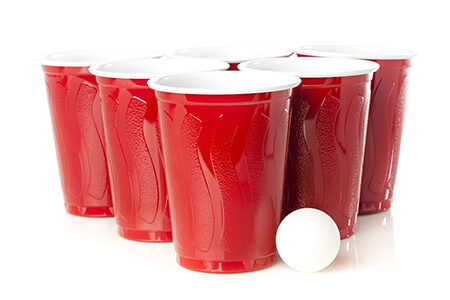 For many schools, their students’ freedom and right to drink is such a third rail that administrations are left with no choice but to insist that alcohol abuse is an individual problem. As a result, most schools ignore environmental factors, such as cheap and unbridled access to bars and clubs on or near campus.
For many schools, their students’ freedom and right to drink is such a third rail that administrations are left with no choice but to insist that alcohol abuse is an individual problem. As a result, most schools ignore environmental factors, such as cheap and unbridled access to bars and clubs on or near campus.
Even in the event of a student’s death, or an issue of alcohol-related injury or violence, any action taken by a school is unlikely to have any meaningful or long-term impact.
In 1993, Henry Wechsler, a social psychologist at the Harvard University School of Public Health, conducted a survey of 17,000 students at 140 colleges to try and better understand the phenomenon of rampant alcohol consumption on campus. Wechsler concluded that 44 percent of all college students engage in binge drinking, partly as a result of a campus culture that prioritizes excessive drinking. Bars around campuses would often drop their prices or offer big discounts in order to lure more students in. Membership in a fraternity or sorority was positively associated with higher levels of binge drinking. Lastly, the simple belief that a college student should drink, and the fear of being ostracized for not engaging, compelled some students to succumb to peer pressure and partake of the easy access to alcohol.
Because this culture is so strong, much about excessive alcohol consumption on college campuses is beyond the reach of what the schools themselves can do. Now, says The New York Times, less than half of the colleges in America enforce their alcohol policies at tailgate parties, in dormitories, and even in Greek life houses. Just 33 percent of schools do compliance checks to track unlawful alcohol sales in neighborhoods adjacent to their campuses. Only 7 percent of schools make any attempt to cut down on the number of establishments selling alcohol, and 2 percent take measures to reduce cheap drink discounts and specials at local bars.
Many educators feel that they are not in the business of policing students, instead preferring to work with the students as young adults who can be encouraged (and, when necessary, disciplined) into making the right choices. For students who are struggling with addiction, however, the understanding is not always that clear-cut.
College Students and Marijuana
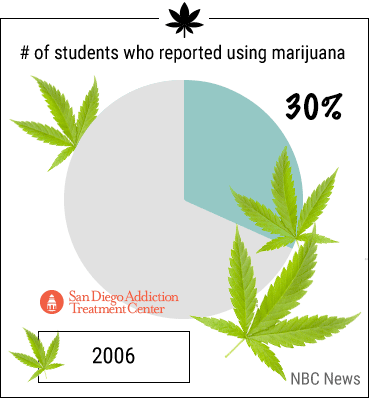
There is much less ambiguity when it comes to the topic of drug use on campus, but that does not make life much easier for students who are in recovery or concerned about being pressured into using. New York Daily News quoted a graduate student from New York University as saying that recreational substance abuse today is “part of going to school,” and not the kind of experimentation on the college scene from a generation ago. In Pace University, a senior talks of parties where bags of cocaine are passed around and the culture of drug use on the campus is so prevalent that some students have made a small fortune selling controlled substances up and down the spectrum, everything from cannabis to LSD.
Marijuana is, unsurprisingly, one of the most popular drugs to do the rounds in dorm rooms. An NBC News story from September 2016 reported that cannabis consumption on college campuses is on the rise, which has the ironic effect of driving down other forms of drug use.
Between 2006 and 2015, the number of students who reported using marijuana increased by 8 percent to 38 percent. One out of every 22 college students surveyed said that they smoked pot at least 20 times a month; 33 percent of students felt that moderate or infrequent cannabis consumption posed no health risks.
A distinguished senior research scientist at the University of Michigan, who has been studying on-campus drug use for decades, called the rise of marijuana among students a dramatic change from the past when numbers were much lower. The difference could be because of how medical marijuana is looked at more favorably, even by notable government figures, and four states changing their laws to legalize recreational marijuana use “has set the stage for more lax attitudes.”
Drugs vs. Drugs
 The result is that students lighting up is now a “national phenomenon.” A student at Evergreen State University in Washington, one of the first states to regulate marijuana for public use, said that there is a lot of cannabis being used at his school, but marijuana has been a strong (and long) part of the culture in Washington, so much so that pot use is looked at more favorably than alcohol consumption. “A group of stoned kids is a lot less dangerous than a group of drunk ones,” he said.
The result is that students lighting up is now a “national phenomenon.” A student at Evergreen State University in Washington, one of the first states to regulate marijuana for public use, said that there is a lot of cannabis being used at his school, but marijuana has been a strong (and long) part of the culture in Washington, so much so that pot use is looked at more favorably than alcohol consumption. “A group of stoned kids is a lot less dangerous than a group of drunk ones,” he said.
A student hailing from Colorado, another state to have legalized marijuana, felt similarly, telling NBC News that “pot smoking has always been common among students,” and expressing a similar belief that smoking marijuana was less medically and socially dangerous than drinking. However, they acknowledged that frequent and regular use of cannabis would be detrimental to a student’s education.
The director of health promotion at the University of New Mexico’s Health and Counseling Center cautiously agrees with the positive attitude toward marijuana use on campus; it has a “lesser impact” than alcohol and binge drinking, she said. Even so, while university communities at large remain untouched by increasing rates of marijuana use (in terms of sexual assault or vandalism), “the individual impact [of marijuana] is a different story.” While cannabis cannot lead to some of the tragedies of alcohol abuse, its harmful effects can be much subtler.
That said, the danger of hard drugs cannot be denied. As far back as 1991, the Southern Medical Journal wrote that students who drink frequently and heavily are the most likely to use cocaine, and being in a fraternity or sorority was most commonly associated with heavy drinking and/or cocaine use. Research strongly suggests Greek lifestyle organizations exert a very strong sense of peer pressure on students to engage in drinking norms, even among students “who enter college determined to remain non-drinkers.” The burden from a desirable and socially esteemed group to engage in alcohol and drug use, no matter how undesirable, “is a major factor” in whether a student decides to take such risks, and it is a significant cause for concern for students who are struggling with addiction. Quoting the Harvard School of Public Health, The New York Times wrote in 1995’s “Study Ties Binge Drinking to Fraternity House Life” that being a member of a fraternity or sorority was “by far” the biggest predictor of binge drinking activity in college.
Learning in Recovery
Many schools realize the importance of ensuring that, during recovery, their students can continue with their education. That’s why some schools, like Rutgers University, have a residential recovery program, where students can be free of the temptation to indulge in the excesses that might take place in other dormitories.
The New York Times calls it “a bridge to recovery on campus,” where colleges offer specialized on- or off-campus housing options for students. The houses have a strict substance-free policy, and even new students are allowed to request placement in those arrangements.
Behind the implementation of such arrangements, is the realization that simply allowing students to return to the same drug- and alcohol-heavy environment after their addiction treatment is tantamount to setting them up for a relapse. Sober adults may have the option of moving away or fostering new social circles; they may also have strong family units to offer support and encouragement. Youths and young adults, still figuring out their place in a world that is full of reminders of their days of excess, don’t have that luxury. The director of addiction treatment at Columbia University’s Medical Center’s Department of Psychiatry called it “simply a recipe for failure.” College students exist in a youth culture, he says, and students who are struggling with addiction need greater support than merely letting them back on campus affords.
Education while in Treatment
In the past, some students would move back in with their parents while continuing their education through a special arrangement with the school. However, this leads to what the Times calls “frozen development”; away from their peers and friends, they never learn how to build healthy relationships, how to liaise with the opposite sex, how to learn from mistakes, or even how to be financially responsible.
On-campus recovery residential programs typically do not charge additional fees for their services, but they do offer extra classes on how to avoid relapse, what to do in the event of a relapse, how to engage with the campus community in healthy ways, and, most importantly, how to have fun as a (sober) student with peers.
As of 2012, Rutgers University was home to 31 students in recovery dorms. Some came straight from high school, a group that program directors say is growing in number. Students who live in recovery dorms are required to attend 12-Step meetings twice a week; they must also meet with an addiction therapist for their first year of recovery every week; they must subject themselves to random and announced drug tests; and they must meet (as a house) with their therapists at least once a month. Sometimes, family members may be invited (or even required) to participate in therapy sessions, an involvement that is very important if therapy is to be successful.
As with most forms of group therapy, students in recovery dorms are trained to look out for one another. In 2011, a student returned to his dorm visibly drunk; his friends found his secret stash of beer, destroyed it, and notified the recovery counselor. In the event of relapse, students are usually taken straight to their families or an aftercare support sponsor. Occasionally, students even turn themselves in.
But program directors at Rutgers, Texas Tech University and Augsburg College are enthused by the students at their recovery dorms being “breathtakingly clean.” Abstinence rates average as high as 95 percent, and 33 percent of students between the ages of 16 and 25 “will improve substantially.”
Call Now (619) 577-4483
Being (and Staying) Sober on Campus
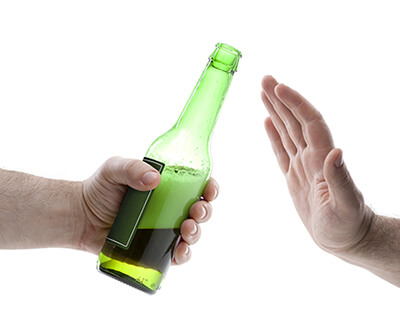 Accepting that aggressively curbing drinking culture on their campuses will likely backfire, some colleges are examining alternatives to offer options for sobriety or moderation. For the issue of students abusing prescription medication (whether stimulants like Ritalin or opioids like OxyContin), some campuses have implemented “drug take back events,” where students can bring in old tablets for proper disposal, no questions asked. The goal, says a crime prevention officer in the special operations division of the University of Missouri-St. Louis Police Department, is to make sure that prescription pills aren’t being abused by providing an easy and obligation-free way for people to turn in their excess medication.
Accepting that aggressively curbing drinking culture on their campuses will likely backfire, some colleges are examining alternatives to offer options for sobriety or moderation. For the issue of students abusing prescription medication (whether stimulants like Ritalin or opioids like OxyContin), some campuses have implemented “drug take back events,” where students can bring in old tablets for proper disposal, no questions asked. The goal, says a crime prevention officer in the special operations division of the University of Missouri-St. Louis Police Department, is to make sure that prescription pills aren’t being abused by providing an easy and obligation-free way for people to turn in their excess medication.
Students improperly taking prescription medication – whether to stay up all night or to pass out in a narcotic sleep – is a serious problem in schools across America. In 2015, over 15 percent of students between the ages of 18 and 25 admitted to taking prescription drugs for nonmedical purposes. College-aged youths and young adults make up one of the more at-risk demographics for that form of drug abuse, and “drug take back events” have been successful in changing the culture around taking prescription drugs.
During finals week, when pressure is at its highest and some students may resort to taking drastic measures to cope, some schools have come up with creative and novel ways to encourage their students to make better decisions. In New Jersey, Caldwell University offers puppy therapy, dancing, massages, and bracelet beading, with the school’s director of counseling services explaining that the temptation to abuse prescription or illegal drugs rises with student levels of stress and anxiety.
A way to combat that problem may be to destigmatize mental health issues by acknowledging the existence of such problems, and providing fun and free alternatives to getting drunk or high. Caldwell is very intentional about employing methods that are deliberately innocent and happy – such as puppy therapy – to offer a specific counter to the tension of finals week and the excess of substance abuse.
Taking Steps to Improve Campus Health
 When a freshman at the University of Pennsylvania committed suicide in 2014, the death of a “star athlete, bright student and beloved friend” shocked the community and administration of the school into evaluating how the culture of the college could have led to six students taking their own lives in the space of 13 months. One of the results was to implement a program whereby upperclassmen would talk about how they overcame the pressure of balancing academic and social expectations while the school itself increased the hours at its counseling center and opened up a dedicated phone line for students to call with their mental health concerns. The goal was to change how students thought of their life at the university and hopefully create an environment where hitting the bottle or taking drugs would not be seen as the only way to make it through school.
When a freshman at the University of Pennsylvania committed suicide in 2014, the death of a “star athlete, bright student and beloved friend” shocked the community and administration of the school into evaluating how the culture of the college could have led to six students taking their own lives in the space of 13 months. One of the results was to implement a program whereby upperclassmen would talk about how they overcame the pressure of balancing academic and social expectations while the school itself increased the hours at its counseling center and opened up a dedicated phone line for students to call with their mental health concerns. The goal was to change how students thought of their life at the university and hopefully create an environment where hitting the bottle or taking drugs would not be seen as the only way to make it through school.
Being sober on campus is not as difficult or ostracizing as it once was. In the wake of many cases of sexual assault, vandalism, or death following an episode (or more) of dangerous drinking, many schools have given their blessings to sober groups and organizations on campus, which provide safe spaces for abstinent students, recovering students, or moderate drinkers who want a break from the drinking scene, to enjoy group and social activities without the pressure or danger of drinking. At the University of Michigan, the annual St. Patrick’s Day Sober Skate Party offers students a fun activity on a day that is typically associated with raucous drinking. The event is sponsored by the Students for Recovery Organization, and facilitators make sure that students who partake are not settling for less than their drinking peers; a 23-year-old recovering alcoholic said that “Priority number one is fun” at the event.
In Minneapolis, Augsburg College’s StepUP program adapts some principles from recovery programs by prohibiting participating students from going to nightclubs, bars, or casinos for the first semester of school. Instead, the program convenes group events and meetups that provide healthy, safe, and positive ways for students to still feel like they are part of the larger Augsburg community without having to risk or compromise their sobriety. Similar, the Sober in College program at the University of Missouri gives students in recovery a place where they can be honest about the difficulties of having to stay sober in an environment that is all-too-conducive to alcohol consumption. The program also makes it a point to host events that allow these students, and other allies, to make the most of their college years.
